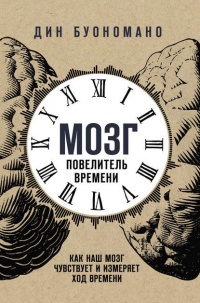Ознакомительная версия. Доступно 23 страниц из 114
7. Linus the Long-Haired Wonder Horse // Scribol (May 2018). https://scribol.com/environment/animals-environment/linus-the-long-haired-wonder-horse/.
8. Uno H., Kenji Adachi, Ph.D., and Montagna W. Baldness of the Red Uacari (Cacajao Rubicundus): Histological Propertiesand Enzyme Activities of Hair Follicles // Journal of Gerontology (Jan 1969), 24 (1): 23–27.
9. De Beer S. G. Embryos and Ancestors. Clarendon Press, 1962, p. 51.
Глава 2. Шерсть, которую мы потеряли
1. Gilligan I. The Prehistoric Development of Clothing: Archaeological Implications of a Thermal Model // Journal of Archaeological Method and Theory (2010), 17: 15–80.
2. Сайт Московского зоопарка. Японский макак. http://www.moscowzoo.ru/animals/mlekopitayushchie/yaponskiy-makak/ (дата обращения: 15.04.2020).
3. Inagaki H., Hamada Y. Differences in Hair Density of Japanese Monkeys (Macaca Fuscata Fuscata) with Localityand Age // Primates (Jan 1985), 26(1): 85–90.
4. Dunbar R. I. M. Group Size, Vocal Grooming and the Origins of Language // Psychonomic Society, Inc. (2016).
Глава 3. У кого волос меньше?
1. Schultz A. H. The Density of Hair in Primates // Human Biology (Sept 1931), 3 (3): 303–321.
2. Meyer-Lierheim F. Die Dichtigkeit der Behaarung beim Fetus des Menschen und der Affen // Zeitschrift für Morphologie und Anthropologie (1910), Bd. 13, H. 1: 131–150. Published by: E. Schweizerbart’sche Verlagsbuchhandlung.
3. Schwartz G. G. and Rosenblum L. A. Allometry of Primate Hair Density and the Evolution of Human Hairlessness // American Journal of Physical Anthropology (1981), 55 (1): 9–12.
4. Sandel A. A. Brief Communication: Hair Density and Body Mass in Mammals and the Evolution of Human Hairlessness // American Journal of Physical Anthropology (2013), 152: 145–150.
5. Szabo G. The Regional Anatomy of the Human Integument with Special Reference to the Distribution of Hair Follicles, Sweat Glands and Melanocytes // Philosophical Transactions of the Royal Society of London. B (1967), No. 779: 252, 447–485.
Глава 4. Но зачем?
1. Wallace A. R. Contributions to the Theory of Natural Selection. A Series of Essays. New York, 1872.
2. Соколов А. Б. Ученые скрывают? Мифы XXI века. — М.: Альпина нон-фикшн, 2018.
3. Darwin C. The Descent of Man, and Selection in Relation to Sex. New York: D. Appleton and Company, 1889, p. 56–58.
4. Соколов А. Б. Австралопитек хватался ногами за ветки, как современный человек // XX2 век. 2018. 17 декабря. https://22century.ru/allsorts/72754.
5. Соколов А. Б. Мягкие ткани австралопитека. Открытый научный проект // АНТРОПОГЕНЕЗ.РУ. 10.09.2011. http://antropogenez.ru/single-news/article/126/.
Глава 5. По одежке протягивай шерстку
1. Knight A. P. Hair // Queen’s Quarterly, 1904.
2. Glass B. Evolution of Hairlessness in Man // Science (1966), 152 (3720): 294.
3. Brace C. L., Hailman J. P., Kennington G. S., Hershkovitz Ph., Olson W. S. What Ever Happened to Hairy Man? // Science (1966), 153 (3734): 362–364.
4. Chatterjee S. K. The Pattern of Indian Clothing in Relation to Tropical Climate // Journal of Human Evolution (1978), 7: 95–99.
5. Gilligan I. Another Tasmanian Paradox: Clothing and Thermal Adaptations in Aboriginal Australia. BAR International Series. Oxford: Archaeopress, 2007.
6. Wyndham C. H. and Morrison J. F. Adjustment to Cold of Bushmen in the Kalahari Desert // Journal of Applied Physiology (1958), 13: 219–225.
7. Gilligan I., Bulbeck D. Environment and Morphology in Australian Aborigines: A Re-analysis of the Birdsell Database // American Journal of Physical Anthropology (2007), 134: 75.
8. Gilligan I. Clothing and Modern Human Behaviour: Prehistoric Tasmania as a Case Study // Archaeology in Oceania (Oct 2007), 42 (3): 102–111.
9. Kushlan J. A. The Evolution of Hairlessness in Man // American Naturalist (Nov 1980), 116 (5): 727–729.
10. Kushlan J. A. The Vestiary Hypothesis of Human Hair Reduction // Journal of Human Evolution (1985), 14: 29–32.
11. Chatterjee S. K. The Pattern of Indian Clothing in Relation to Tropical Climate // Journal of Human Evolution (1978), 7: 95–99.
12. Соколов А. Б. Из чего сшито пальто ледяного человека // АНТРОПОГЕНЕЗ.РУ. 24.08.2016. http://antropogenez.ru/single-news/article/588/.
13. Соколов А. Б. Неандертальцы были плохими портными? // XX2 век. 15.08.2016. https://22century.ru/allsorts/31315.
14. Carbonell E., García-Antón M., Mallol C., Mosquera M., Ollé A. The TD6 Level Lithic Industry from Gran Dolina, Atapuerca (Burgos, Spain): Production and Use // Journal of Human Evolution (1999), 37: 653–693.
15. Parésa J. M., Arnolda L., Duvala M., Demuroa M., Pérez-González A. Reassessing the Age of Atapuerca-TD6 (Spain): New Paleomagnetic Results // Journal of Archaeological Science (Deс 2013), 40 (12): 4586–4595.
16. Gilligan I. The Prehistoric Development of Clothing: Archaeological Implications of a Thermal Model // Published online (Jan 2010) # Springer Science+Business Media, LLC (2009).
17. Kittler R., Kayser M., Stoneking M. Molecular Evolution of Pediculus humanus and the Origin of Clothing // Current Biology (Aug 2003), 13 (16): 1414–1417. https://www.sciencedirect.com/science/article/pii/S0960982203005074 (дата обращения: 15.04.2020).
18. Kittler R., Kayser M., Stoneking M. Molecular Evolution of Pediculus Humanus and the Origin of Clothing // Current Biology (Dec 2004), 14 (24): 2309.
19. Reed D. L., Smith V. S., Hammond S. L., Rogers A. R., Clayton D. H. Genetic Analysis of Lice Supports Direct Contact between Modern and Archaic Humans // PLoS Biology (Nov 2004), 2 (11): e340.
Ознакомительная версия. Доступно 23 страниц из 114
























